4 June 2017
For those of us that consume chocolate for a sugar fix, I’m afraid that you’re missing out. The true connoisseurs know that there is much depth and breadth to chocolate, far beyond its sweetness. Arguably, enough to rival that of wine.
What do I mean and how is this possible? Here are five facts about chocolate flavour to help you decide for yourself.
Fact 1: Variances in Varietal
Let’s start by revisiting the key varieties of cacao. In my post Let’s Talk About: Cocoa Beans, we discussed the differences between Farastero, Criollo and Trinitario. And later on, in A Rare Bite of History, I shared my experience of tasting the Fortunato No. 4, pure Nacional cacao and considered the controversial 4th cacao variety.
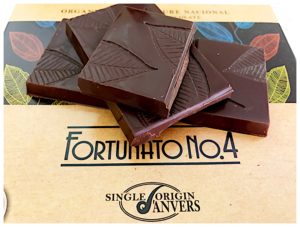 It’s an undisputed fact that the variety of cacao is a key factor that influences the flavours of the eventual chocolate. Case in point, consider the intensely fruity Peruvian Nacional Fortunato No. 4, the fruity and acidic rare Venezuelan criollo Chuao, the earthy, nutty and mildly fruity Venezuelan criollo Porcelana and the earthy, honey-like and fruity wild criollo Beniano from Bolivia.
It’s an undisputed fact that the variety of cacao is a key factor that influences the flavours of the eventual chocolate. Case in point, consider the intensely fruity Peruvian Nacional Fortunato No. 4, the fruity and acidic rare Venezuelan criollo Chuao, the earthy, nutty and mildly fruity Venezuelan criollo Porcelana and the earthy, honey-like and fruity wild criollo Beniano from Bolivia.
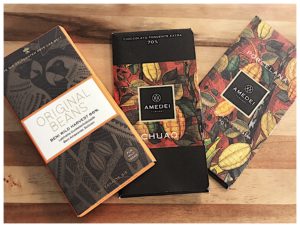 The issue that divides experts in this field is the genetic purity of today’s cacao varieties. As a result of natural cross fertilisation and extensive agricultural intervention, some may argue that it’s inaccurate to refer to cacao varieties as being purely Forastero, Criollo, Trinitario and/ or Nacional. I believe that this ambiguity adds to the intrigue of the cacao and the flavour characteristics of the chocolate.
The issue that divides experts in this field is the genetic purity of today’s cacao varieties. As a result of natural cross fertilisation and extensive agricultural intervention, some may argue that it’s inaccurate to refer to cacao varieties as being purely Forastero, Criollo, Trinitario and/ or Nacional. I believe that this ambiguity adds to the intrigue of the cacao and the flavour characteristics of the chocolate.
Fact 2: The Touch of Terroir
This term is derived from the French word “terre”, which translates to “earth”. Whilst commonly used to discuss wine, terroir is equally as important when it comes to chocolate.
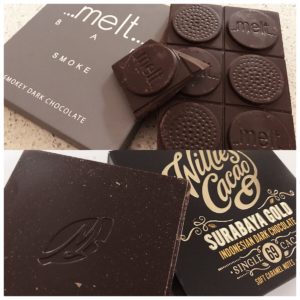
Terroir is everything in the environment of the cacao plant, including its geography, geology, ecology and climate, that may affect the characteristics of the cacao that it yields and hence the chocolate made from it. My first encounter with terroir and its influence on the flavours of chocolate occurred when I tasted Melt’s Smoke bar. The earthy and smoky flavours transported me to the volcanic island of São Tomé from which the criollo cacao beans were derived. Willie’s Cacao’s Surabaya Gold bar, made from Javanese criollo cacao, possesses similarly characteristics due to the volcanic soil from which it was grown.
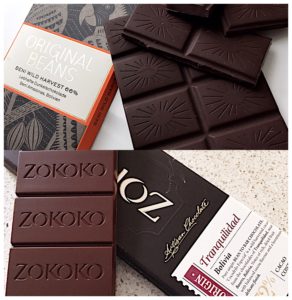 The beauty of terroir is that similar varieties of cacao from the same country or region may end up tasting different due to variances in conditions such as climate, soil, terrain, altitude and the degree of human intervention. For example, Original Bean’s Beni Wild Harvest, made from rare and wild Beniano cacao that grows in the depths of the Bolivian Amazon, tastes different to Zokoko’s Tranquilidad, made from Beni cacao found only in the rainforests of the Beni, in the north eastern region of Bolivia. The latter is earthy, fruity, acidic and mildly nutty while the former has the added complexity of honey and roasted tea leaves.
The beauty of terroir is that similar varieties of cacao from the same country or region may end up tasting different due to variances in conditions such as climate, soil, terrain, altitude and the degree of human intervention. For example, Original Bean’s Beni Wild Harvest, made from rare and wild Beniano cacao that grows in the depths of the Bolivian Amazon, tastes different to Zokoko’s Tranquilidad, made from Beni cacao found only in the rainforests of the Beni, in the north eastern region of Bolivia. The latter is earthy, fruity, acidic and mildly nutty while the former has the added complexity of honey and roasted tea leaves.
Fact 3: Fermentation for Flavour
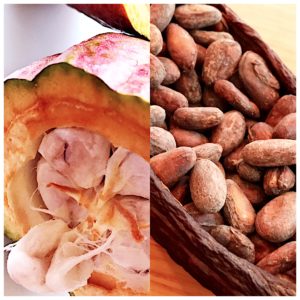
One does not have to look far to experience the end product of fermentation – think breakfast staples like bread and yoghurt and all alcoholic beverages including beers, wines and liquors. Chocolate is no different.
Fermentation is a critical step in the post-harvesting of cacao. As explained in my post Let’s Talk About: Bean to Bar, nature takes its course whereby the combination of moisture, heat, airborne microorganisms and aeration/ turning of the beans results in the fermentation of the cacao pulp into alcohol followed by oxidation of the alcohol to lactic and acetic acid. It is this reaction between moisture, alcohol and acids that leads to initial flavour development in the beans. By altering the duration of fermentation and degree of aeration/ number of turns, it is possible to alter the flavour characteristics within the same batch of beans. Such is the beauty and wonder of science!
Fact 4: Drying to Prevent Detriment
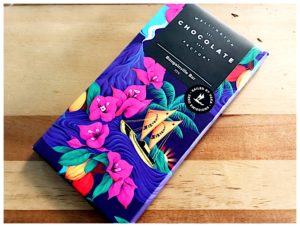 To stop the fermentation process, preserve the cacao beans and prevent growth of unwanted microorganisms, the beans are subjected to air drying under the sun. However, in the highly humid and sometimes rainy conditions of the tropics and equator where cacao grows, air drying may not always be possible. Under such circumstances, farmers may resort to fire or smoke drying which imparts a smoky character to the beans. Wellington Chocolate Factory’s Bougainville 70% bar is one such example of smoke-dried cacao beans imparting distinctly smoky notes to the chocolate.
To stop the fermentation process, preserve the cacao beans and prevent growth of unwanted microorganisms, the beans are subjected to air drying under the sun. However, in the highly humid and sometimes rainy conditions of the tropics and equator where cacao grows, air drying may not always be possible. Under such circumstances, farmers may resort to fire or smoke drying which imparts a smoky character to the beans. Wellington Chocolate Factory’s Bougainville 70% bar is one such example of smoke-dried cacao beans imparting distinctly smoky notes to the chocolate.
Fact 5: Processing to Perfection
As discussed in my post Let’s Talk About: Bean to Bar, the chocolate processing steps of bean roasting and conching, as well as the types of ingredients added, have a direct impact on the flavours of the end product. Chocolate makers continue to refine the combination of all three in order to create novel and exciting taste experiences.
 Generally, the more intense the roasting, the more prominent the manifestation of roasted/ toasted and caramelised notes in the chocolate. As for conching, some makers swear by the traditional melangeur (Amedei, Zokoko and Monsieur Truffe) while others resort to modern equipment. And the longer the conche, the smoother the mouthfeel and the more refined the flavours.
Generally, the more intense the roasting, the more prominent the manifestation of roasted/ toasted and caramelised notes in the chocolate. As for conching, some makers swear by the traditional melangeur (Amedei, Zokoko and Monsieur Truffe) while others resort to modern equipment. And the longer the conche, the smoother the mouthfeel and the more refined the flavours.
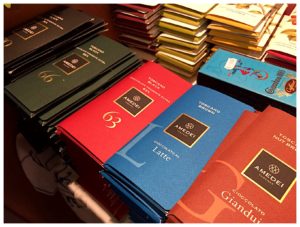 In terms of ingredients, purists believe that only cane sugar is needed to complement the cacao liquor (solids and butter). On the other hand, it’s not unusual for chocolate makers to add vanilla or vanilla extract for flavour. Amedei incorporates vanilla into their entire chocolate range, including the revered Chuao and Porcelana bars. Milk solids and milk powder are added to create milk chocolate while cocoa butter may sometimes be used to enhance the smoothness and mouthfeel of chocolate. Be weary of chocolate that contains vegetable oils as a substitute for cocoa – you are getting an inferior product. Pay attention to your food labels and choose wisely.
In terms of ingredients, purists believe that only cane sugar is needed to complement the cacao liquor (solids and butter). On the other hand, it’s not unusual for chocolate makers to add vanilla or vanilla extract for flavour. Amedei incorporates vanilla into their entire chocolate range, including the revered Chuao and Porcelana bars. Milk solids and milk powder are added to create milk chocolate while cocoa butter may sometimes be used to enhance the smoothness and mouthfeel of chocolate. Be weary of chocolate that contains vegetable oils as a substitute for cocoa – you are getting an inferior product. Pay attention to your food labels and choose wisely.
Bringing It All Together
As a chocolate consumer, look beyond the sugar to experience the fascinating flavours in chocolate, from its unique depth of varietals and terroir through to the breath and heterogeneity of its post-harvesting and processing.